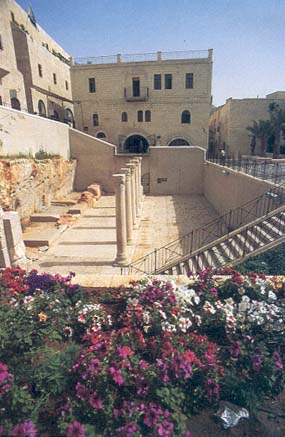Image Details

Richard Nowitz
The Cardo Maximus. When excavators first uncovered this portion of the Jerusalem Cardo, now beautifully restored in the Old City’s Jewish Quarter, they thought they had found a typical Roman cardo, or main street. But when they lifted the pavement, they found beneath it Byzantine pottery—indicating that it could not have been built during the Roman period. They realized they had discovered instead a Byzantine extension of the Roman Cardo, which ran only from the Damascus Gate in the north to modern David Street—stopping at the edge of the Roman civilian quarter. As the Christian city expanded south in the Byzantine period, the Cardo was extended to connect the Church of the Holy Sepulchre in the north with the Nea Church in the south, a monumental basilica built by Emperor Justinian (527–565 C.E.), which has been excavated in the Jewish Quarter, along the southern Old City wall.
